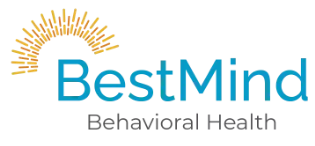If you’ve been keeping up with the latest developments in mental health treatments, you’ve probably heard about ketamine and esketamine. These two drugs have been gaining much attention for their potential use in treating depression and other forms of mental illness. But what’s the difference between these two medications? In this article, we’ll explore the difference between ketamine and esketamine and how they’re used in clinical settings.
What is Ketamine?
Ketamine is an anesthetic used mainly in veterinary medicine. It was first approved as a human anesthetic in 1970, and it has been studied extensively ever since then. It’s a dissociative drug, meaning it creates a trance-like feeling and can significantly distort one’s perceptions of sight, sound, and touch.
In recent years, ketamine has gained popularity as a treatment for depression. It works by blocking NMDA receptors in the brain, which allows for increased serotonin levels and other neurotransmitters known to improve mood. Studies have also shown that ketamine can increase the generation of new brain cells—neurogenesis—contributing to its anti-depressive effects. Because of its unique properties, ketamine is now being explored as a potential new therapy for other mental health concerns such as anxiety and PTSD
If you’re surprised to hear about ketamine being used in clinical settings, it may be because of its reputation as a recreational drug. It has become popular in the club scene for its hallucinogenic effects, although it’s important to note that taking ketamine recreationally can be incredibly dangerous and even deadly when misused.
How is Ketamine administered?
Ketamine treatments are most commonly administered as an intravenous infusion that usually lasts over 40 minutes. Though it is also sometimes used intramuscularly, studies have shown that intravenous ketamine infusions allow for more consistent results. Patients will generally receive multiple doses spaced out over a few weeks to maximize effectiveness.
During each dose, patients may experience side effects such as dizziness, disorientation, confusion, or anxiety. It’s important to note that these side effects usually do not last long and do not require any action on the part of the patient. Ketamine can also be used in conjunction with other treatments such as psychotherapy, depending on what best suits each individual’s needs.
Is Ketamine FDA approved for depression?
As of 2023, Ketamine is not currently FDA-approved for depression, but it is being studied extensively. There’s only one ketamine-based medication that’s been approved by the FDA: esketamine.
What is Esketamine?
Esketamine (Spravato) is a derivative of ketamine that was approved by the FDA in 2019. Esketamine works by acting on glutamate receptor systems in the brain, producing an antidepressant effect within hours rather than days or weeks. It is the first new drug in over 30 years to be approved for the treatment of depression and has opened up many possibilities for future therapies.
Unlike ketamine, esketamine can be administered through a nasal spray, allowing for easier dosing and improved patient compliance. Esketamine is also structurally different from ketamine, which means it does not produce the same dissociative and psychedelic effects as traditional ketamine. This makes it attractive to patients who prefer to avoid such experiences associated with using the original form of this drug.
Overall, esketamine is considered safer and more convenient than traditional ketamine for treating depression. It has also been approved as an adjunct to antidepressants, meaning it can be used in conjunction with other medications such as SSRIs.
How effective is Esketamine?
Though esketamine has been approved for treating depression, it is still unclear how effective it really is. Early studies of esketamine treatment, including 31 global clinical trials in more than 2200 patients, demonstrate that it is safe and effective for use. However more research needs to be done before it can be definitively said to relieve depressive symptoms.
What we do know is that it can help those suffering from Treatment-Resistant Depression who don’t receive relief from other, more traditional depression medications. It is also FDA-approved for adults with major depressive disorder with acute suicidal ideation or behavior (when taken in conjunction with an oral antidepressant).
If you would like to learn more about the efficacy of Spravato, please read our article about esketamine’s benefits.
Differences between Esketamine vs Ketamine
Now that you have a better understanding of what ketamine and esketamine are, let’s take a closer look at the differences between the two.
Chemical structure and mechanism of action
As we mentioned earlier, ketamine is a well-known anesthetic that has been used in medical settings for decades. Its main function is as an NMDA (N-methyl-D-Aspartate) receptor antagonist that affects the glutametergic system in the brain. This means it can modulate synaptic plasticity and neural connections, contributing to its potential antidepressant effects.
Esketamine is chemically related to ketamine but has a distinct chemical composition. It has a more selective action on NMDA receptors which is thought to give it more potent antidepressant effects. Because its structurally different from ketamine, esketamine also doesn’t produce the same psychedelic effects.
Clinical uses and administration
The way that ketamine and esketamine are administered is also very different. When used for anesthesia and pain management, ketamine is usually administered intravenously in a clinical setting. When used off-label to treat depression, ketamine involves infusions or intramuscular injections. Because of the potential for side effects, ketamine treatment sessions require careful monitoring.
Unlike ketamine, esketamine has been specifically approved for use in the treatment of treatment-resistant depression (TRD) and is administered as a nasal spray. This route of administration is more accessible and easier for outpatient settings. In fact, many patients administer esketamine nasal spray themselves under clinical supervision. Esketamine is usually prescribed for patients who haven’t responded to conventional antidepressants and is often used in conjunction with oral antidepressants.
Safety and efficacy
Ketamine has rapid antidepressant effects that produce results within hours. This makes it especially beneficial for patients with treatment-resistant depression or those who require rapid relief from depression symptoms. That said, its use can come with numerous risks, including dissociation, hallucinations, and potential for abuse. The long-term effects of ketamine treatment are still being studied.
Like ketamine, esketamine also provides rapid relief from depressive symptoms and has a similar efficacy profile. That said, its controlled dosing and route of administration gives esketamine a more favorable safety profile compared to ketamine. Some patients can still experience side effects after esketamine therapy, however, such as mild dissociation or sedation.
Regulation
Due to its potential for abuse, ketamine is a controlled substance. Its use for depression is considered off-label and might not be covered by all insurance plans. On the other hand, esketamine has been approved by the FDA specifically for treating treatment-resistant depression. This makes it a more accessible option compared to ketamine infusion therapy.
Insurance coverage
Another difference between ketamine and esketamine therapies is insurance coverage. Ketamine treatments for depression aren’t covered by insurance as it is not an FDA-approved treatment for depression. This means you have to pay for the treatment out of pocket.
Esketamine, however, is covered by most insurance plans, including Medicare. This is because it is an FDA-approved depression treatment that is backed by plenty of studies demonstrating its safety and efficacy. To be eligible for esketamine insurance coverage, you usually need to have tried at least two other antidepressants and either experienced intolerable side effects or seen no sufficient benefit.
Which is more effective: ketamine or esketamine?
There is yet to be a study comparing the efficacy of ketamine vs esketamine. Because ketamine is yet to be approved as a depression treatment, we may not see such a comparison study for awhile (if ever). That said, studies demonstrate that both ketamine and esketamine are effective at treating depression.
Summary: Difference between ketamine and esketamine
To sum up, esketamine is a more potent and safer alternative to ketamine therapy. This means that it can be administered at lower doses and potentially have fewer side effects. Both ketamine and esketamine should be administered by a licensed professional in a clinical setting. They are both DEA Schedule III controlled substances that have the potential to become addictive.
Esketamine treatment usually takes place over a two to three month period. The first doses are administered two times a week for the first four weeks and then once a week for the next four weeks. After that, esketamine can be taken once every few weeks. If a patient wants to stop the treatment, it can be gradually tapered down to discontinuation.
Unlike esketamine, ketamine treatment has no singular recommended administration schedule. This is because it is yet to be approved by the FDA and its use as a depression treatment is considered off-label.
Are you dealing with Treatment-Resistant Depression?
If you suffer from treatment-resistant depression (TRD) or major depressive disorder (MDD), BestMind Behavioral Health provides effective esketamine therapy to help you find relief. Esketamine, also known as SPRAVATO®, is a proven and FDA-approved medication that has been clinically shown to reduce symptoms of TRD and MDD. Our providers are dedicated to helping their patients live healthier, more fulfilling lives.
To learn more about the benefits of esketamine therapy and how it can help you manage your condition, reach out to us today at BestMind Behavioral Health for a consultation. We look forward to helping you on your journey toward better mental health.


